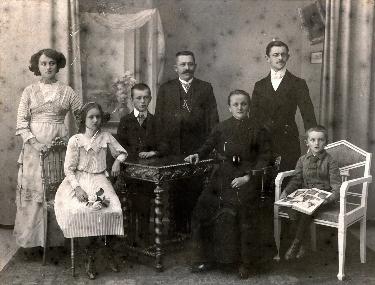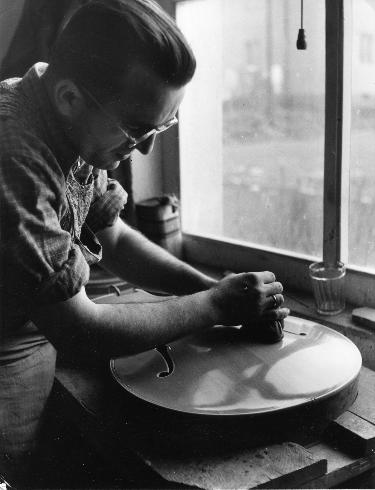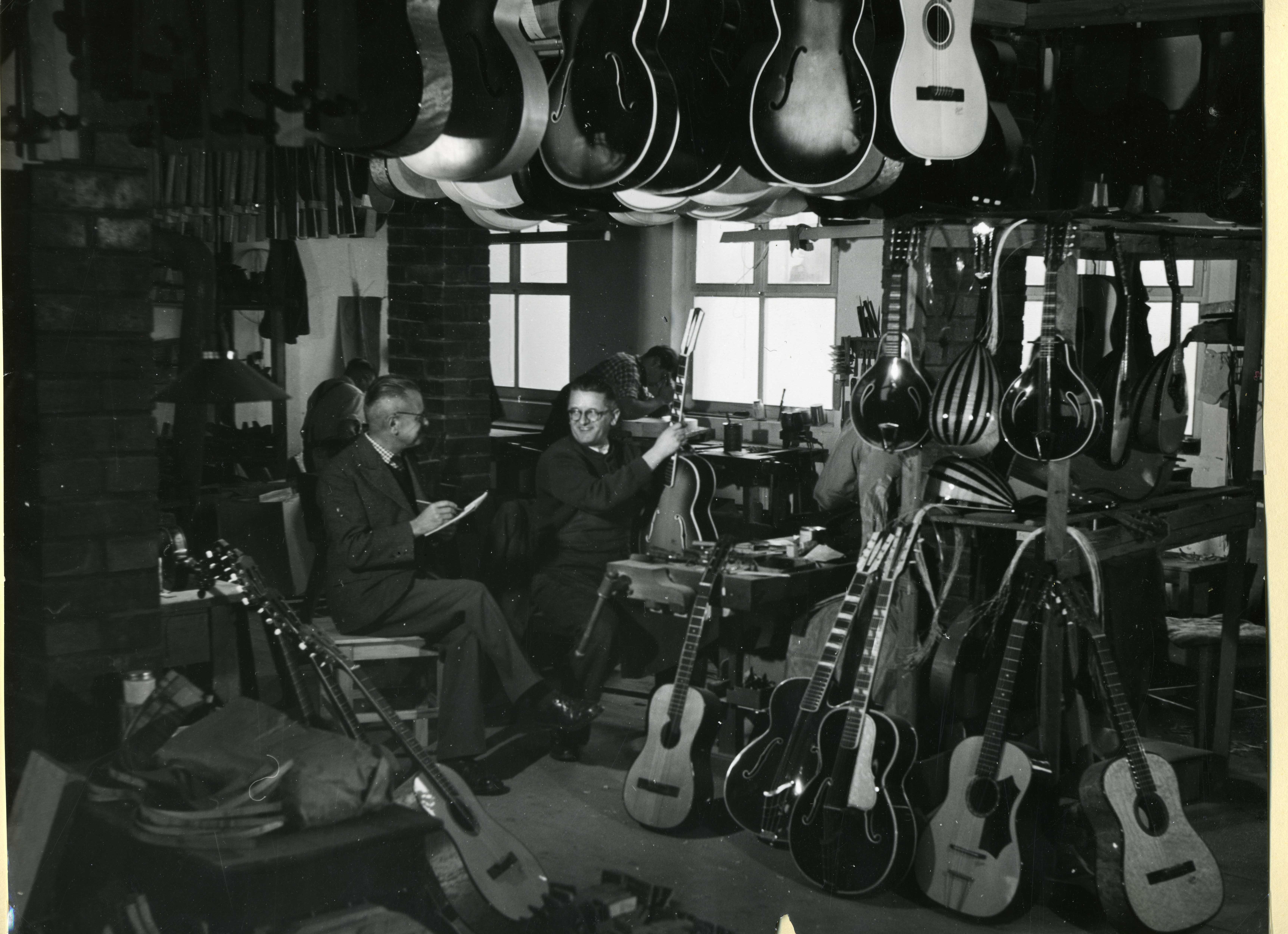Höfner - A Short History

The product line expanded to include violas, celli and double basses. During the 1930s the company began production of guitars, the first models were steel strung with arched tops and backs and known as “Schlaggitarren”, forerunners of the modern day archtop guitar. By the mid 1930s the company employed around 300 outworkers and 30 staff in the factory.
The Second World War significantly restricted Höfner’s ability to export goods and the company found itself producing wood based items for the army, such as crates and soles for boots. After the war the business saw its greatest upheaval as Schönbach was now located in Czechoslovakia where the German-speaking population was expropriated and companies in Czechoslovakia nationalized, resulting in the summer of 1945 in the takeover of the company by a state administrator. This was not a situation that the Höfner family were happy with so they applied for permission to move to West Germany where they set up the business, almost from scratch, in 1948 at Möhrendorf in Bavaria.
"You couldn't buy anything, everything was done by bartering."
Gerhilde Benker - Walter Höfner's daughter
Conditions at Möhrendorf were far from ideal but nonetheless Höfner worked hard to begin production and soon had a steady flow of instruments to deliver to the market. It was a difficult time. Gerhilde Benker (Walter Höfner’s daughter) recalled many years later; “You couldn’t buy anything, everything was done by bartering. So many screws for a sheet of glass, that sort of thing”. Josef and Walter began looking at the possibility of building not only a new factory but a whole small town for the workers and homeworkers from Schönbach to live in. Following much deliberation with officials they found the ideal site at Bubenreuth, a small village that was open to the idea of expansion and development. On 20th October, 1949, the laying of the foundation-stone for an estate to house the luthiers took place in Bubenreuth and by Christmas 1950 the new Hofner factory was up and running.
The 1950s saw the company rebuild its reputation and begin again to export across the world. Links were made with distributors in all major countries who kept Hofner’s order books full. As musical tastes began to change in the 50s the production of guitars increased and so did the model range. Many of the models that became synonymous with the Höfner brand were conceived at this time; the President, The Committee and the Violin Bass to name just three. Sales were good and steady, but nobody was expecting what happened next – Rock n Roll. Suddenly the demand for guitars increased to such an extent that Höfner had to further extend the factory at Bubenreuth and bring guitar production levels up to a point where they accounted for more than 50% of overall turnover, something nobody would ever have predicted.

In 1961 a young man walked into a music shop in Hamburg and purchased a Höfner 500/1 Violin Bass guitar. Not long afterwards he and the group he was in changed the world of music and youth culture and brought Höfner its iconic guitar model. The young man was of course Sir Paul McCartney, bass player in The Beatles. Sir Paul’s continued use of a Violin Bass for over 50 years has ensured that this model has become one of the most easily recognised guitars in the world and has seen it in steady production at Höfner ever since.
The lifting of import restrictions, in 1961, on goods from the USA to the UK saw the American guitar manufacturers begin to take the market away from Höfner. There was a steady decline in sales throughout the period 1965 to 1970 which also saw the collapse of Höfner’s main distributor in the UK, The Selmer Company. This decline wasn’t a disaster for Höfner who set about rationalising production and once again they put their energy into the orchestral string instruments, building up sales of these. Gerhilde Höfner had married Christian Benker and together they took over the running of the business throughout the 1970s and into the 1980s. This period became a difficult time for the business as competition from Japan and then China increased, particularly for student level stringed instruments. Gerhilde and Christian Benker did their best to make Höfner competitive but the pressure of very low cost goods from the Far East saw Höfner brought to a low state by the 1990s.
On 1st January 1994 Höfner was sold to Boosey & Hawkes, a major british music company that already had several music instrument making companies in their portefolio. For the next nine years Höfner continued to produce instruments but it cannot be described as the business’s happiest period. There was some investment in the company from Boosey and Hawkes but the parent lacked the drive that had existed before the takeover. It wasn’t long before the parent company set about rationalising affairs and the main step taken was to close the factory at Bubenreuth and move all production to the newer factory at Hagenau, which was enlarged and modernized in 1997.

In 2003 Boosey & Hawkes decided to sell their “instrument division”, which included Höfner, to a British investment consortium named The Music Group (TMG). This lasted only for a few months as they soon decided to sell off the individual companies that they had purchased. So, at the end of 2004, Höfner was sold to Klaus Schöller and his wife Ulrike Schrimpff. Klaus had been the former general manager at Höfner while Ulrike had been Finance Director at Höfner since 1995.
In the years following the management buyout Höfner invested more heavily in its overseas manufacturing facility. The branch office in Beijing is 100% Höfner (i.e. is not a joint venture) and has been granted all necessary licenses by the Chinese authorities, including a grade A export license (one of the few foreign-owned firms with this certification level). Hofner made enormous efforts with Beijing to attain the desired high quality level which was achieved by investing in equipment and machinery and the constant exchange of personnel between China and Germany. Today in Beijing Hofner student level instruments are produced, while medium-priced and master-built instruments are still manufactured in Hagenau.
Höfner looks forward to a bright future as it continues to react as it always has to the world market for stringed instruments. Today the company is focusing on the Green Line range, instruments that use native tonewoods and environmentally finishes. Despite the numerous changes over 130 years the company is still strongly a family firm with strong values for customers, quality and staff.